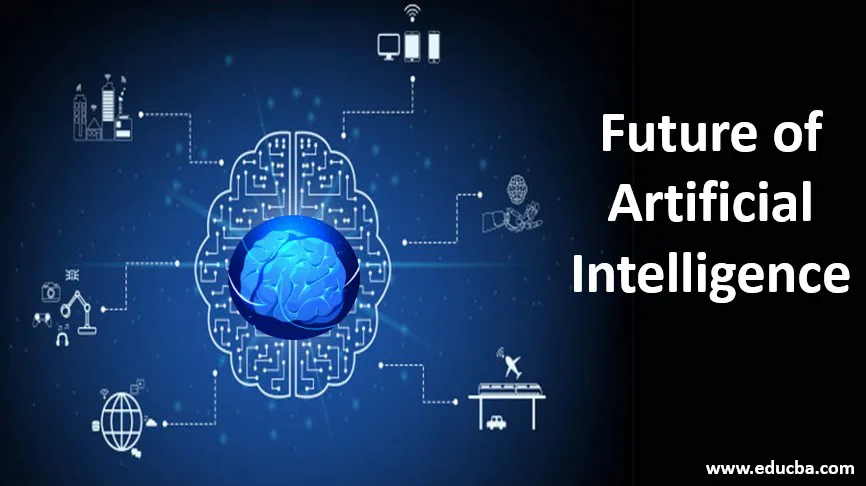Why AI Systems Are the Future of Software: A Deep Dive into the AI Revolution
The software industry is on the brink of a paradigm shift. Artificial Intelligence (AI) is no longer a futuristic concept but a present reality, reshaping how we develop, deploy, and interact with software. This article explores why AI systems are poised to become the cornerstone of future software development and how they're already transforming the landscape.
The Current State of AI in Software
Before we dive into the future, let's examine where we stand today:
- AI Market Size: The global AI software market reached $62.35 billion in 2020 and is projected to grow at a CAGR of 40.2% from 2021 to 2028 (Grand View Research, 2021).
- Adoption Rates: 50% of enterprises are already using AI in at least one business function (McKinsey, 2020).
- Investment: Global AI investment hit $77.5 billion in 2021, a significant increase from $36 billion in 2020 (Stanford AI Index Report, 2022).
These figures underscore the rapid integration of AI into the software ecosystem. But what's driving this growth?

Key Drivers of AI's Dominance in Software
3.1 Enhanced Efficiency and Productivity
AI systems are dramatically improving software development efficiency:
- Automated Code Generation: AI tools can generate up to 30% of code in some projects, reducing development time by 20-30% (Gartner, 2021).
- Bug Detection and Fixing: AI-powered tools can identify and fix up to 90% of common coding errors before they reach production (DeepCode, 2020).
- Resource Optimization: AI algorithms can optimize resource allocation in cloud environments, reducing costs by up to 30% (Google Cloud, 2022).
3.2 Improved User Experience
AI is revolutionizing how users interact with software:
- Natural Language Processing (NLP): By 2024, 50% of user interactions with software will involve voice or other AI-powered interfaces (IDC, 2021).
- Personalization: AI-driven personalization can increase user engagement by up to 60% and conversion rates by 15% (Accenture, 2021).
- Predictive Analytics: AI can anticipate user needs with 85-90% accuracy, leading to proactive feature suggestions and updates (Forrester, 2022).
3.3 Enhanced Security and Reliability
AI is becoming crucial for robust software security:
- Threat Detection: AI-powered security systems can detect 99.9% of malware, compared to 95% for traditional systems (Capgemini, 2021).
- Anomaly Detection: AI can identify unusual patterns in real-time, reducing the average time to detect security breaches by 60% (IBM, 2022).
- Self-Healing Systems: AI-driven self-healing mechanisms can resolve up to 80% of common software issues without human intervention (Gartner, 2023).
The Rise of AI Development Services
As AI becomes integral to software, we're seeing a surge in specialized AI development services. These services are bridging the gap between traditional software development and AI integration:
- Market Growth: The AI services market is expected to reach $43.9 billion by 2025, growing at a CAGR of 32.6% (MarketsandMarkets, 2021).
- Democratization of AI: AI development services are making advanced AI capabilities accessible to companies of all sizes, not just tech giants.
- Specialization: From computer vision to natural language processing, AI development services are becoming increasingly specialized, allowing for tailored solutions.
AI-Powered Software Features: A Closer Look
Let's examine some groundbreaking AI-powered features that are redefining software capabilities:
5.1 Chat with Your PDF
The ability to "chat with your PDF" is a prime example of how AI is transforming document interaction:
- Natural Language Queries: Users can ask questions about document content in plain language, receiving accurate responses within seconds.
- Context Understanding: AI systems can comprehend document context, providing more relevant and nuanced answers than simple keyword searches.
- Multi-Document Analysis: Advanced AI can cross-reference information across multiple PDFs, offering insights that would take humans hours to compile.
- Learning and Improvement: These systems improve over time, learning from user interactions to provide increasingly accurate and helpful responses.
5.2 Code Completion and Generation
AI-powered code assistants are revolutionizing the coding process:
- Predictive Coding: Tools like GitHub Copilot can suggest entire functions based on comments or context, with up to 40% accuracy for some languages.
- Error Prevention: AI code assistants can reduce syntax errors by up to 70%, significantly speeding up the debugging process.
- Language Agnostic: Many AI coding tools work across multiple programming languages, adapting to the developer's needs.
5.3 Automated Testing and Quality Assurance
AI is transforming software testing:
- Test Generation: AI can automatically generate test cases, covering up to 90% of potential scenarios.
- Visual Testing: AI-powered visual regression testing can detect UI changes with 99.9% accuracy, even for complex layouts.
- Performance Prediction: AI models can predict software performance under various conditions with 85-90% accuracy, allowing for proactive optimization.
Challenges and Considerations
While AI promises a revolutionary future for software, it's not without challenges:
- Data Privacy: As AI systems require vast amounts of data, ensuring user privacy becomes increasingly complex.
- Ethical Concerns: Issues like AI bias and decision transparency need careful consideration and mitigation strategies.
- Skill Gap: There's a growing need for developers skilled in both traditional software development and AI technologies.
- Integration Complexity: Incorporating AI into existing software architectures can be challenging and resource-intensive.
The Future Landscape: AI-Native Software
As we look ahead, we're moving towards a paradigm of AI-native software:
- Adaptive Systems: Future software will continuously learn and adapt to user behavior and environmental changes.
- Autonomous Development: AI will play an increasingly larger role in the software development lifecycle, from requirements gathering to maintenance.
- Human-AI Collaboration: The future of software development will likely be a symbiosis of human creativity and AI capabilities.
Conclusion
The integration of AI into software is not just a trend; it's a fundamental shift in how we conceive, develop, and interact with technology. From enhancing developer productivity to revolutionizing user experiences, AI is set to be the driving force behind the next generation of software.
As we stand on the cusp of this AI-driven future, it's clear that embracing and mastering AI technologies will be crucial for staying competitive in the software industry. The question is no longer if AI will transform software, but how quickly and thoroughly this transformation will occur.
For developers, product managers, and tech leaders, the message is clear: The future of software is AI-driven, and the time to adapt and innovate is now.
Queremos ter as melhores pessoas com
a gente
Para nós melhores pessoas são aquelas com quem compartilhamos os mesmos valores: qualidade, profissionalismo, responsabilidade, comprometimento, honestidade, simplicidade e justiça; aquelas que estão dispostas a somar e unir esforços para gerar valor para as pessoas que vivem do agronegócio e que se sintam conectadas com o nosso propósito: o de impulsionar a prosperidade no campo!
Se identifica com a gente? Vem ser Agriness!
O que dizem
as nossas pessoas




Iniciei na Agriness como estagiário, ainda no meu primeiro semestre da faculdade, e seis meses depois fui efetivado. Aqui encontrei uma empresa disposta a dar uma oportunidade para iniciantes ingressarem no mercado de trabalho e desenvolverem suas habilidades e competências técnicas. O aprendizado e a troca de experiência e conhecimento com o time é diária. Espero continuar contribuindo com a empresa e aprender cada vez mais aqui dentro".
Marcelino Jannuzzi
Desenvolvedor de Software


Entrei na Agriness desde 2013, em uma posição inicial na área comercial. Com o apoio do meu time - e dos meus próprios esforços - fui conquistando o domínio sobre o negócio, confiança e cada vez mais responsabilidade. Assim fui progredindo de cargo conforme minhas entregas e méritos.
Também tive a oportunidade de me inserir e contribuir na construção de áreas, processos, projetos, produtos e eventos, o que me ajudou ainda mais a conhecer o negócio. Estar aqui é estar aberto a ouvir, a participar e se envolver. Todo dia é dia de aprendizado nessa prazerosa e desafiadora jornada de crescimento".
Mariani Oliveira
Gerente de Relacionamento

"Tenho orgulho imenso em pertencer a essa empresa. A Agriness respeita as pessoas, tem simplicidade e proximidade com todos, o que faz com que eu me sinta em casa.
Atuamos em um segmento de destaque que se moderniza constantemente e nossas soluções de tecnologia contribuem nessa evolução, não só no Brasil mas em diversos países. Aqui temos um ambiente de construção colaborativa, acreditamos que a contribuição de todos nos leva à melhor solução, além de gerar uma química fantástica nas equipes."
Ricardo Henn
Coordenador de TecnologiaNossos benefícios
Cartão Flex
Auxílio alimentação, mobilidade e home office em um só cartão, com saldo flexível para você usar como quiser
Plano de saúde
Plano de saúde nacional sem mensalidade e sem copartipação
Plano odontológico
Plano odontológico nacional sem mensalidade e sem copartipação
Previdência privada
Uma forcinha extra para cuidar do seu futuro: você investe e a gente investe junto com você
Parceria Sesc
Cultura, educação, lazer e assistência
Aula de idiomas
Aulas de inglês e espanhol
Ginástica laboral
Aulas 2 vezes por semana

